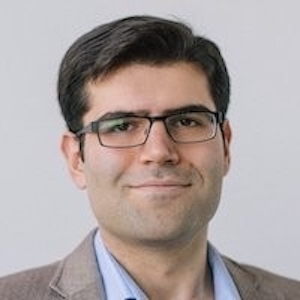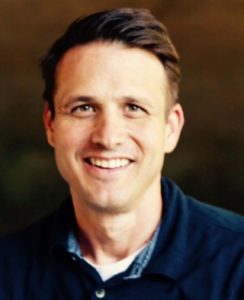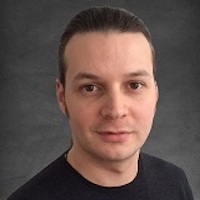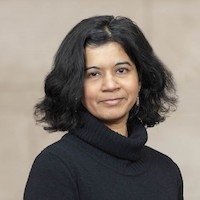
MIPS Seminar Series: Title TBA
Steven Paul Poplack, MD
Professor of Radiology (Breast Imaging)
Stanford University Medical Center
Location: Coming soon!
12:00pm – 12:45pm Seminar & Discussion
RSVP: Coming soon!
ABSTRACT
Coming soon!
ABOUT
Coming soon!
Hosted by: Katherine Ferrara, PhD
Sponsored by: Molecular Imaging Program at Stanford & the Department of Radiology

Saeed Hassanpour, PhD
Associate Professor of Biomedical Data Science
Associate Professor of Epidemiology
Associate Professor of Computer Science
Dartmouth Geisel School of Medicine
Deep Learning for Histology Images Analysis
Abstract:
With the recent expansions of whole-slide digital scanning, archiving, and high-throughput tissue banks, the field of digital pathology is primed to benefit significantly from deep learning technology. This talk will cover several applications of deep learning for characterizing histopathological patterns on high-resolution microscopy images for cancerous and precancerous lesions. Furthermore, the current challenges for building deep learning models for pathology image analysis will be discussed and new methodological advances to address these bottlenecks will be presented.
About:
Dr. Saeed Hassanpour is an Associate Professor in the Departments of Biomedical Data Science, Computer Science, and Epidemiology at Dartmouth College. His research is focused on machine learning and multimodal data analysis for precision health. Dr. Hassanpour has led multiple NIH-funded research projects, which resulted in novel machine learning and deep learning models for medical image analysis and clinical text mining to improve diagnosis, prognosis, and personalized therapies. Before joining Dartmouth, he worked as a Research Engineer at Microsoft. Dr. Hassanpour received his Ph.D. in Electrical Engineering with a minor in Biomedical Informatics from Stanford University and completed his postdoctoral training at Stanford Center for Artificial Intelligence in Medicine & Imaging.

MIPS Seminar Series: Title TBA
Matthew Bogyo, PhD
Professor of Pathology and of Microbiology and Immunology and, by courtesy, of Chemical and Systems Biology
Stanford University
Location: Coming soon!
12:00pm – 12:45pm Seminar & Discussion
RSVP: Coming soon!
ABSTRACT
Coming soon!
ABOUT
Dr. Bogyo received a B.Sc. degree in Chemistry from Bates College in 1993 and a Ph.D. in Biochemistry from the Massachusetts Institute of Technology in 1997. After completion of his degree he was appointed as a Faculty Fellow in the Department of Biochemistry and Biophysics at the University of California, San Francisco. Dr. Bogyo served as the Head of Chemical Proteomics at Celera Genomics from 2001 to 2003 while maintaining an Adjunct Faculty appointment at UCSF. In the Summer of 2003 Dr. Bogyo joined the Department of Pathology at Stanford Medical School and was appointed as a faculty member in the Department of Microbiology and Immunology in 2004. His interests are focused on the use of chemistry to study the role of proteases in human disease. In particular his laboratory is currently working on understanding the role of cysteine proteases in tumorgenesis and also in the life cycle of human parasites and bacterial pathogens. Dr. Bogyo currently serves on the Editorial Board of Biochemical Journal, Cell Chemical Biology, Molecular and Cellular Proteomics and is an Academic Editor at PLoS One. Dr. Bogyo is a consultant for several biotechnology and pharmaceutical companies in the Bay Area and is a founder and board member of Akrotome Imaging and Facile Therapeutics.
Hosted by: Katherine Ferrara, PhD
Sponsored by: Molecular Imaging Program at Stanford & the Department of Radiology

Indrani Bhattacharya, PhD
Postdoctoral Research Fellow
Department of Radiology
Stanford University
Title: Multimodal Data Fusion for Selective Identification of Aggressive and Indolent Prostate Cancer on Magnetic Resonance Imaging
Abstract: Automated methods for detecting prostate cancer and distinguishing indolent from aggressive disease on Magnetic Resonance Imaging (MRI) could assist in early diagnosis and treatment planning. Existing automated methods of prostate cancer detection mostly rely on ground truth labels with limited accuracy, ignore disease pathology characteristics observed on resected tissue, and cannot selectively identify aggressive (Gleason Pattern≥4) and indolent (Gleason Pattern=3) cancers when they co-exist in mixed lesions. This talk will cover multimodal and multi-scale fusion approaches to integrate radiology images, pathology images, and clinical domain knowledge about prostate cancer distribution to selectively identify and localize aggressive and indolent cancers on prostate MRI.

Rogier van der Sluijs, PhD
Postdoctoral Research Fellow
Department of Radiology
Stanford University
Title: Pretraining Neural Networks for Medical AI
Abstract: Transfer learning has quickly become standard practice for deep learning on medical images. Typically, practitioners repurpose existing neural networks and their corresponding weights to bootstrap model development. This talk will cover several methods to pretrain neural networks for medical tasks. The current challenges for pretraining neural networks in Radiology will be discussed and recent advancements that address these bottlenecks will be highlighted.

Nina Kottler, MD, MS
Associate Chief Medical Officer, Clinical AI
VP Clinical Operations
Radiology Partners
Abstract:
We have a call to action in healthcare – we need to drive value. Artificial intelligence (AI), if deployed correctly, can help accomplish this lofty mission. In this discussion we will review the following lessons learned in deploying radiology AI at scale: 4 unexpected benefits of implementing AI emergent finding triage; the importance of investing in AI radiologist education; how “most” AI needs to be incorporated into the radiologist workflow; why a platform is required to deploy AI at scale and what a modern platform looks like; how to use AI to add value to your data; and, as Dr. Curt Langlotz famously said, why rads (practices) who use AI will replace those who don’t (a depiction of what the role of the radiologist might look like in a tech enabled future).
Bio:
Dr. Kottler has been a practicing radiologist specializing in emergency imaging for over 16 years. Combining her clinical experience with a graduate degree in applied mathematics, she has been using technological innovation to drive value in radiology. As the first radiologist to join Radiology Partners, Dr. Kottler has held multiple leadership positions within her practice and is currently the associate Chief Medical Officer for Clinical AI. Externally Dr. Kottler serves on multiple committees for the ACR, RSNA, and SIIM. Dr. Kottler is also passionate about promoting diversity and creating a culture of belonging. As such she is a member of the AAWR, is a member of the diversity and inclusion committee at SIIM, serves on the steering committee for RAD=, and leads the education and development division of the Belonging Committee within Radiology Partners.

Spyridon (Spyros) Bakas, PhD
Assistant Professor in the Department of Pathology,
Laboratory Medicine, and of Radiology
Center for Biomedical Image Computing and Analytics (CBICA)
Perelman School of Medicine
University of Pennsylvania
Title: Imaging Analytics for Neuro-Oncology:
Towards Computational Diagnostics
Abstract: Central nervous system (CNS) tumors come with vastly heterogeneous histologic, molecular, and radiographic landscapes, rendering their precise characterization challenging. The rapidly growing fields of biophysical modeling and radiomics have shown promise in better characterizing the molecular, spatial, and temporal heterogeneity of tumors. Integrative analysis of CNS tumors, including clinically acquired multi-parametric magnetic resonance imaging (mpMRI), assists in identifying macroscopic quantifiable tumor patterns of invasion and proliferation, potentially leading to improved (a) detection/segmentation of tumor subregions and (b) computer-aided diagnostic/prognostic/predictive modeling. This talk will touch upon example studies on this space, as well as an overview of the largest to-date real-world federated learning study to detect brain tumor boundaries.

Harini Veeraraghavan, PhD
Associate Attending Computer Scientist
Department of Medical Physics
Memorial Sloan-Kettering Cancer Center
Using AI for Longitudinal Tumor Response Monitoring and AI Guided Cancer Treatments: From Lab to Clinic
Abstract:
Cancer patients are imaged with multiple imaging modalities as part of routine cancer care. However, the rich information available from the images are not fully exploited to better manage patient care through earlier intervention as well as more precise targeted treatments. In this talk, I will present some of the new AI methodologies we have been developing to track tumor response as well as from routinely acquired imaging applied to image-guided radiation treatments using CT/cone-beam CT as well as MRI-guided precision treatments. I will also present some demonstration studies of how AI based automated segmentation and tumor as well as healthy tissue change assessment can be used to early detect treatment toxicities to enable clinicians to better manage cancer care. Finally, I will show how these developed methods have been put to routine clinical care for automating radiotherapy treatment planning at MSK.

Spyridon (Spyros) Bakas, PhD
Assistant Professor in the Department of Pathology,
Laboratory Medicine, and of Radiology
Center for Biomedical Image Computing and Analytics (CBICA)
Perelman School of Medicine
University of Pennsylvania
Title: Imaging Analytics for Neuro-Oncology: Towards Computational Diagnostics
Central nervous system (CNS) tumors come with vastly heterogeneous histologic, molecular, and radiographic landscapes, rendering their precise characterization challenging. The rapidly growing fields of biophysical modeling and radiomics have shown promise in better characterizing the molecular, spatial, and temporal heterogeneity of tumors. Integrative analysis of CNS tumors, including clinically acquired multi-parametric magnetic resonance imaging (mpMRI), assists in identifying macroscopic quantifiable tumor patterns of invasion and proliferation, potentially leading to improved (a) detection/segmentation of tumor subregions and (b) computer-aided diagnostic/prognostic/predictive modeling. This talk will touch upon example studies on this space, as well as an overview of the largest to-date real-world federated learning study to detect brain tumor boundaries.

Daniel Marcus, PhD
Professor of Radiology
Director of the Neuroinformatics Research Group
Director of the Neuroimaging Informatics and Analysis Center
Washington University
Abstract:
Developing and deploying computational tools for neuro-oncology applications includes a sequence of complex steps to identify appropriate images, assess image quality, annotate, process and other prepare and manipulate data for analysis. We have implemented services and tools on the open source XNAT informatics platform to automate much of this workflow to improve both its efficiency and effectiveness. Dr. Marcus will discuss this automated workflow and its implementation in a number of data sets and applications at Washington University.

Lena Maier-Hein, PhD
Head of Department, Computer Assisted Medical Interventions
Managing Director, Data Science and Digital Oncology
Managing Director, National Center for Tumor Diseases
German Cancer Research Center
Title: Missing the (Bench)mark?
Abstract
Machine learning has begun to revolutionize almost all areas of health research. Success stories cover a wide variety of application fields ranging from radiology and gastroenterology all the way to mental health. Strikingly, however, solutions that perform favorably in research generally do not translate well to clinical practice, and little attention is being given to learning from failures. Focusing on biomedical image analysis as a key area of health-related machine learning, this talk will present pitfalls, caveats and recommendations related to machine learning-based biomedical image analysis. As a particular highlight, it will cover yet unpublished work on two key research questions related to biomedical image analysis competitions: 1) How can we best select performance metrics according to the characteristics of the driving biomedical question? And 2) Why is the winner the best? The results have been compiled based on the input of hundreds of image analysis researchers worldwide.